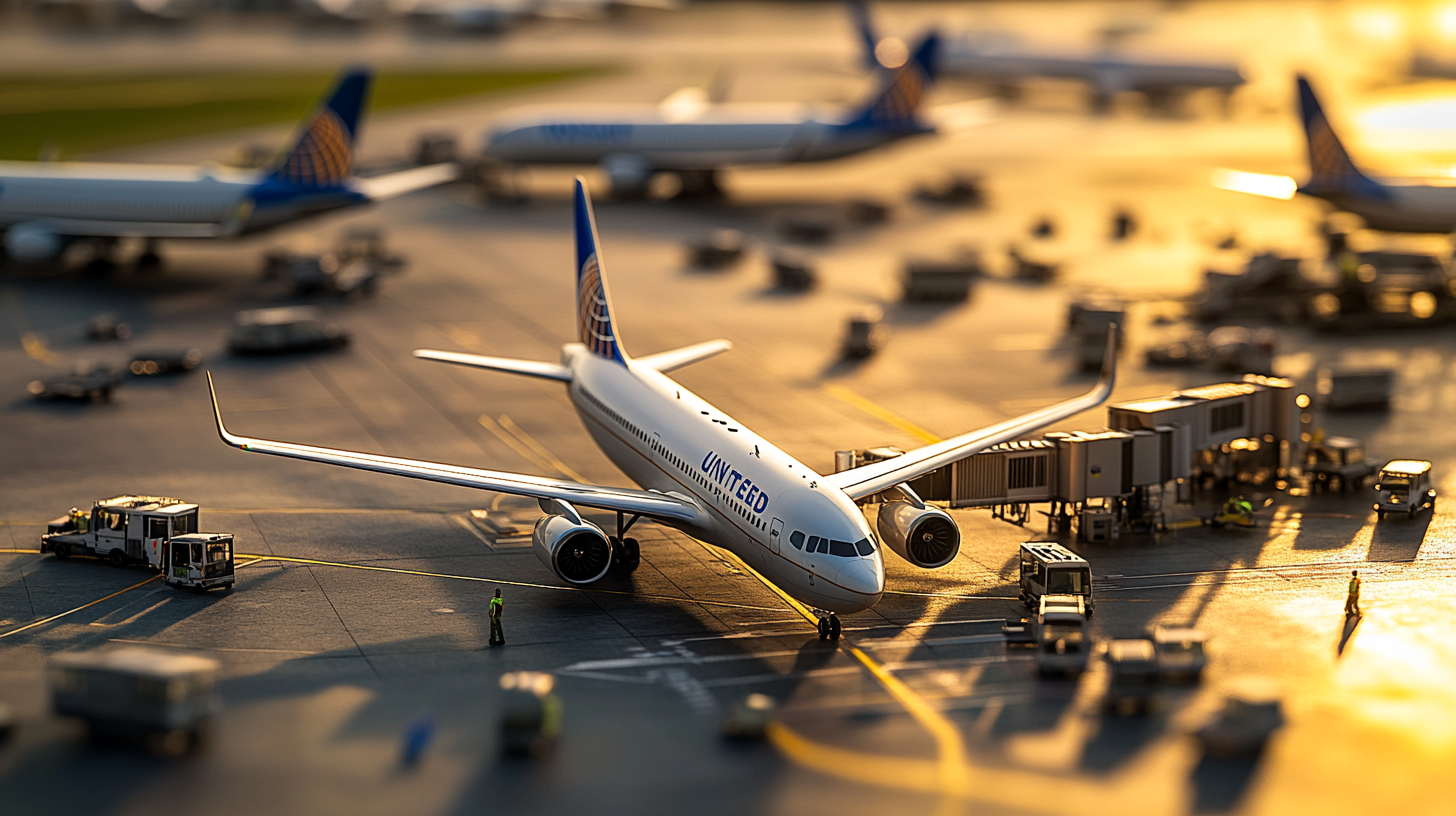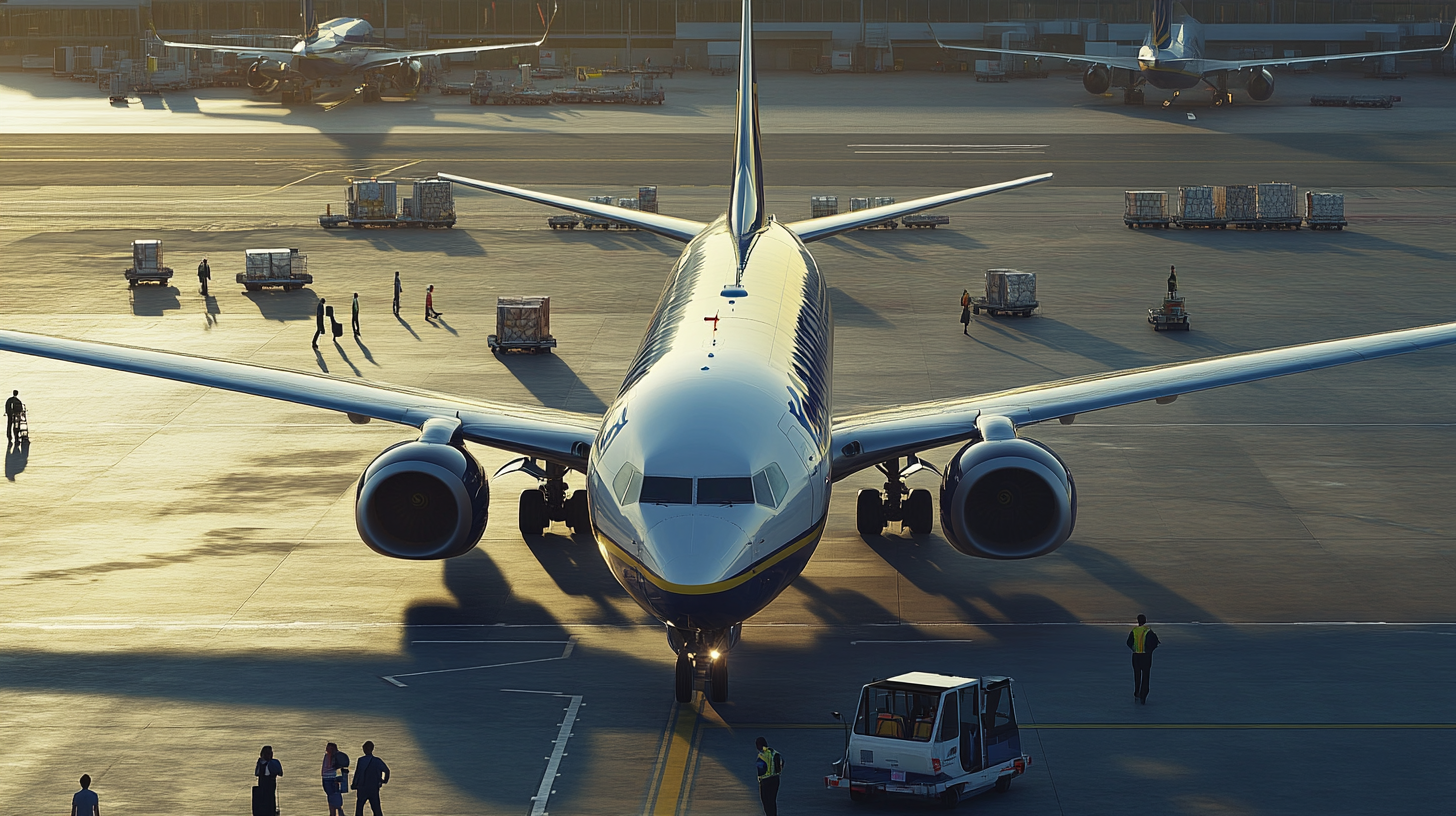Unpacking Airline Route Planning

The intricate world of airline route planning is often perceived as arbitrary, with decisions seemingly made without rhyme or reason. Passengers might find themselves puzzled when a direct flight exists between two small cities, yet connecting flights are required between major hubs. However, behind every route lies a strategic and complex process that balances market demand, operational feasibility, and financial performance. This article delves deep into the multifaceted realm of airline route planning, uncovering the meticulous strategies airlines employ to navigate the skies profitably and efficiently.
The Strategic Process of Network Planning

At the heart of route decisions is Network Planning, a sophisticated process that evaluates potential routes for profitability while forecasting competitor reactions. This process involves analyzing vast amounts of data, including historical passenger numbers, economic trends, and travel patterns. Airlines have evolved from using rudimentary tools to embracing advanced technologies like Lufthansa Systems’ NetLine/Plan and other state-of-the-art predictive analytics platforms for route optimization . These cutting-edge tools offer superior speed, transparency, and forecasting accuracy, enabling airlines to make informed decisions swiftly in a dynamic market. For instance, incorporating real-time data analytics allows planners to adjust routes in response to sudden changes in demand or competitive pressures. However, the true power of these systems is unlocked by skilled planners who understand how to leverage technology effectively amidst the ever-changing aviation landscape. Their expertise transforms raw data into strategic insights, ensuring that each route aligns with the airline’s overarching goals.
Key Factors Influencing Route Decisions

Route planning extends far beyond assessing passenger demand. Airlines meticulously evaluate multiple facets before introducing or retiring routes:
Demand Analysis

Understanding passenger and cargo demand is paramount. Airlines analyze data on travel trends, seasonal variations, and economic activities, often utilizing advanced demand forecasting methodologies in aviation to gauge potential passenger numbers. High-demand routes are often prioritized as nonstop flights, providing convenience and capturing market share. For example, routes connecting major business hubs are scheduled with frequent services to accommodate business travelers. Conversely, lower-demand routes might be served with connections or less frequent flights to optimize resource utilization and maintain profitability.
Competitive Positioning

Airlines assess their market presence relative to competitors. Offering unique routes or scheduling flights at strategic times, guided by competitive analysis tools in airline industry , can provide a competitive edge, attracting passengers seeking flexibility and convenience. For instance, an airline might schedule an early morning flight to cater to business travelers who prefer to arrive at their destination for morning meetings. Additionally, entering untapped markets or underserved destinations can help airlines establish a strong foothold before competitors do.
Operational Feasibility

Operational logistics, including aircraft and crew availability, are critical components of route planning. Airlines must ensure they have the appropriate aircraft types suited for the journey length, passenger load, and airport capabilities, often relying on aircraft performance assessment tools . For long-haul flights, wide-body aircraft with extended range capabilities are necessary, while short-haul flights may utilize smaller, more efficient planes. Crew scheduling is also a complex task, requiring compliance with labor regulations and ensuring that staff are trained and certified for specific aircraft and routes. Additionally, airlines must navigate regulatory requirements, especially for international flights, which may involve securing landing rights, overflight permissions, and adhering to bilateral air service agreements.
Financial Performance and Strategic Value

Profitability assessments involve a detailed analysis of costs versus potential revenues. Airlines calculate projected revenue from passenger fares, cargo, and ancillary services against operational costs, including fuel, staffing, maintenance, and airport fees. Beyond immediate financial gains, airlines consider the strategic value of a route, such as market growth potential and alignment with long-term business goals, often informed by strategic route development frameworks in aviation . For example, establishing a route to a burgeoning tourist destination may not be immediately profitable but can position the airline to capitalize on future demand. Government incentives and partnerships can also influence these decisions, offsetting initial costs and fostering mutually beneficial relationships.
The Dynamic Nature of the “Perfect Network”

The concept of a “perfect network” in aviation is inherently fluid, shaped by market fluctuations, technological advancements, and evolving consumer preferences. As new markets emerge and passenger demands shift, airlines must continually reassess and adjust their route networks. Advanced route evaluation practices are essential, incorporating comprehensive data analysis, sustainability considerations, and strategic foresight, as demonstrated in emerging trends in global airline network optimization . Airlines are increasingly utilizing tools that can simulate various scenarios, assessing the impact of different strategies on network performance. With a projected 67% rise in global aircraft movements by 2042, airlines face significant opportunities and challenges, necessitating adaptive strategies and innovative thinking. Staying ahead in such a dynamic environment requires agility, responsiveness, and a willingness to innovate.
Innovative Strategies and Case Studies

United Airlines: Balancing Profitability and Market Presence

United Airlines exemplifies strategic planning by meticulously analyzing passenger load factors, fare structures, and potential demand, utilizing advanced airline revenue management systems to inform their decisions. Their focus on maximizing profitability through their hub-and-spoke network allows for efficient utilization of resources, connecting passengers through central hubs to various destinations. However, United strategically avoids certain high-demand routes where competition is intense, and profit margins are thin. Instead, they concentrate on routes where they can maintain a competitive advantage. Critics argue that this approach may hinder customer loyalty, as passengers value the convenience of direct flights to popular destinations. They suggest that serving key routes—even at a loss—could enhance retention and competitive positioning, reinforcing brand loyalty and market presence.
Ryanair: Adapting to Market Dynamics

Low-cost carriers like Ryanair employ the point-to-point model, prioritizing direct routes with high efficiency and quick turnaround times. This model minimizes connecting flights and reduces complexity in scheduling. Ryanair’s strategy focuses on operating flights between secondary airports, which often have lower fees and less congestion, allowing for faster operations. Their agility in adjusting to seasonal demand and market trends showcases the importance of flexibility in route planning, a concept further explored in flexible network strategies for low-cost airlines . For example, during peak holiday seasons, Ryanair may increase frequencies to popular tourist destinations while scaling back during off-peak times. This adaptability enables them to optimize resource utilization and maintain cost leadership in the competitive low-cost market segment.
The Role of Data and Technology in Route Optimization

In the modern aviation industry, data analytics and advanced technologies are integral to route optimization. Airlines leverage big data to gain insights into market trends, passenger behaviors, and operational performance, employing advanced aviation data analytics platforms to inform their strategies. Tools like Cirium’s Diio Mi provide comprehensive datasets, including aircraft values, flight tracking, emissions, and passenger traffic. With access to real-time and historical data, airlines can perform in-depth analyses to predict demand, assess the profitability of new routes, and monitor competitor activities. These resources enhance decision-making and operational efficiency, enabling airlines to identify market opportunities, improve sustainability through optimized flight paths, and optimize on-time performance. The integration of artificial intelligence and machine learning algorithms further refines predictive capabilities, allowing for more precise forecasting and strategic planning.
External Influences: The Impact of Tourism Boards and Stakeholders

Beyond quantitative analysis, qualitative factors significantly influence route planning. Tourism boards, such as Tourism Ireland, play a crucial role in securing new routes by aligning with airlines’ objectives, a topic discussed further in collaborative strategies between airlines and tourism boards . They provide valuable insights into local travel behaviors, cultural events, and seasonal attractions that can affect passenger demand. Airlines require a deep understanding of year-round destination viability, balancing tourist influx during peak seasons with lower demand periods. Business travel demand also plays a critical role, as consistent corporate travel can stabilize route profitability. Stakeholder support, including incentives from local governments or partnerships with hospitality sectors, can enhance the attractiveness of a route. These collaborations can provide the nuanced understanding necessary for successful route development, ensuring that new services meet the needs of both the airline and the local community.
Operational Considerations and Models

Effective route planning involves several operational considerations:
- Aircraft Type and Fleet Capacity: Selecting suitable aircraft based on journey length, passenger load, and operational costs is critical. Airlines must consider factors such as fuel efficiency, maintenance requirements, and seating capacity. Utilizing the right aircraft can significantly impact the profitability of a route.
- Cargo and Agreements: Incorporating cargo opportunities and interline agreements to maximize revenue. Carrying cargo can supplement passenger revenue, especially on routes with lower passenger demand. Interline agreements with other airlines enable seamless connectivity for passengers and cargo, expanding market reach.
- Cost Management: Balancing labor, fuel, maintenance, and airport fees to ensure profitability. Cost control measures, such as fuel hedging or negotiating favorable airport fees, can enhance financial performance.
- Network Models: Choosing between hub-and-spoke or point-to-point models based on the airline’s business strategy, as detailed in comparative analysis of airline network models . The hub-and-spoke model allows for efficient connections through central hubs, while the point-to-point model offers direct flights between destinations, reducing travel time.
- Seasonal Adjustments: Adapting routes and capacity to meet seasonal demand fluctuations. Airlines may increase flights to leisure destinations during holiday seasons or adjust schedules to accommodate peak travel times, optimizing aircraft utilization.
The Comprehensive Route Planning Process

Planning a new airline route is a meticulous process involving several stages:
- Market Research: Analyzing passenger demand, market trends, and competition to identify opportunities. This involves studying demographic data, economic indicators, and travel behavior patterns to forecast potential route success.
- Profitability Assessment: Evaluating potential revenues against operational costs to ensure financial viability. Airlines use financial modeling to estimate fares, load factors, and ancillary revenues, weighing them against expenses such as fuel, staff, and airport charges, utilizing comprehensive airline financial analysis tools .
- Regulatory Clearances: Securing permissions from aviation authorities and complying with international regulations. This may involve negotiating bilateral agreements, obtaining slots at congested airports, and ensuring compliance with safety and security standards.
- Operational Planning: Selecting appropriate aircraft, securing airport slots, and planning crew schedules. Logistics planning ensures that resources are allocated efficiently and that the route integrates seamlessly into the airline’s existing network.
- Performance Monitoring: Continuously assessing the route’s performance post-launch to make necessary adjustments. Key performance indicators such as load factors, yield, and customer feedback inform ongoing strategies to optimize the route.
Challenges and Future Outlook

Airlines face ongoing challenges in route planning, such as:
Environmental Factors

Weather conditions, including jet streams, impact flight times and fuel consumption. Westbound flights may take longer due to headwinds, affecting scheduling and costs. Airlines must plan for these variables, sometimes adding buffer time to schedules or adjusting flight paths to optimize efficiency, guided by advanced flight planning and weather assessment tools . Severe weather events can also disrupt operations, requiring contingency planning and flexible scheduling.
Sustainability Considerations

With increasing emphasis on environmental responsibility, airlines are incorporating sustainability into route planning, optimizing paths for reduced emissions. This includes adopting more fuel-efficient aircraft, investing in sustainable aviation fuels, and participating in carbon offset programs. Additionally, optimizing flight altitudes and speeds can contribute to lower fuel consumption. Airlines are also considering the environmental impact when selecting new routes, balancing profitability with ecological stewardship, as part of their commitment to sustainable aviation initiatives and practices .
Market Volatility

Global events, economic shifts, and changing consumer preferences require airlines to be agile, adjusting routes and capacity in response to real-time data. Airlines must monitor global developments closely and be prepared to make rapid adjustments to their networks, an agility supported by real-time market analysis tools for airlines . This may involve scaling back services, reassigning aircraft, or exploring new markets to mitigate risks and capitalize on emerging opportunities.
Final Thoughts
Unpacking airline route planning reveals a complex tapestry of strategic decision-making, technological innovation, and adaptive strategies. Airlines must balance profitability, operational efficiency, and customer satisfaction while navigating an ever-evolving landscape filled with uncertainties and opportunities. The fusion of advanced analytics, skilled planners, and collaborative partnerships positions airlines to optimize their networks effectively, meeting the demands of a globalized world.
As the industry anticipates significant growth, with new markets opening and passenger numbers rising, continued innovation and agility will be essential in shaping the future of global aviation networks. Embracing sustainability, leveraging technology, and remaining attuned to market dynamics will enable airlines to soar above challenges and connect the world like never before.
Follow us back to Seat 5A for more insights and updates on the aviation industry.






